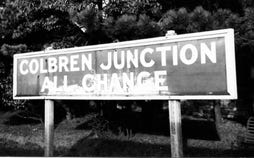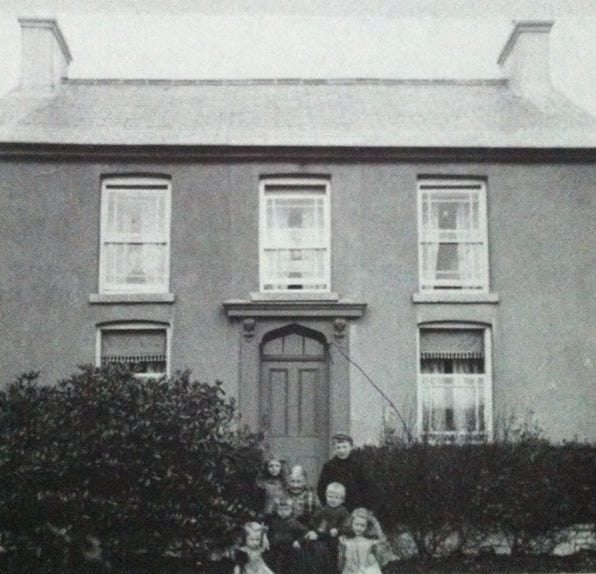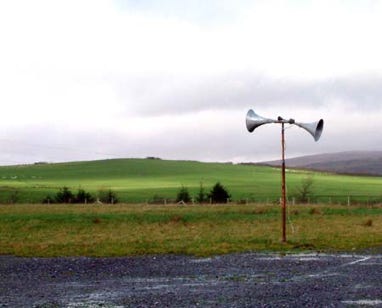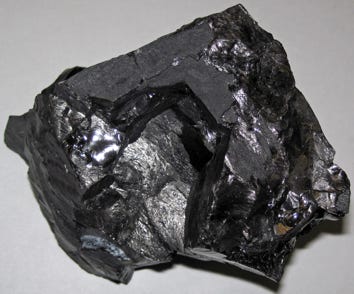On the 24th December 1886, one Daniel Jones, an orphaned young collier of 24, married Anne Morgan, 22. Daniel had been lodging previously with his sister at Camnant farm near the village of Coelbren, Breconshire. Anne was a daughter of the nearby Coelbren House headed by Richard Morgan.
Daniel Jones’ family were – as far as we can see - native to this remote but rapidly industrialising area of south Wales at the top of the Dulais, Neath and Swansea valleys, while the Morgans came originally from further afield, near Llywel, Breconshire, from a farmscape still redolent of medieval times. The union of these two families by this marriage is the main reason for this account – and for the existence of its author and many other descendants from these usually large families.
There were also numerous links later, crossing generations, between these and other local families and their examination provides a long lens through which to view the social and economic make-up of this small part of Wales from the early eighteenth century. Our families exemplify the rapid and swirling changes in local industry, agriculture, politics, religion, and education in this area over the last three hundred years.
A later product of this marriage, my grandfather, John Walter Jones (1904-79), came from a family of 10 children and his numerous uncles and aunts on both parents’ sides were as prolific as them. He had about 60 identifiable cousins, and those to whom he could say he was related in his own generation would double if we allowed for their spouses – and practically all of them did marry.
This explosion of population from the early nineteenth century was mirrored in other families. They all lived in the upper Swansea valleys – the Neath (Nedd), the Dulais (Dylais) and the Swansea (Tawe) – and were almost all to a man involved with coal mining. This slightly remote outpost of the South Wales coalfield was known as the anthracite belt, even just “the anthracite”.
The families clustered in small settlements that became the present-day villages of Banwen, Coelbren, Dyffryn Cellwen, Onllwyn and Seven Sisters. Some came a little further east from the slightly lusher Ystradfelte.
Originally scraping a meagre existence from the smallholdings – most too small really to be called farms - which punctuated these relatively high, and exposed valley heads, they inevitably became involved with mining as its economic nexus swiftly encroached upon them and defined the history of this area for generations.
George Brinley Evans (2012) wrote that at one time – probably in the early to mid-twentieth century - these “anthracite villages” were among the best places for working families in South Wales and there is no doubt that the communities created here by coal were strong and vibrant. Earlier, however, coal also ravaged families through early death, accident and injury and the overall rewards for the men’s labour were pitiful. Now, it has left abruptly fractured communities, still unsure of their futures now little trace of the mines remains, their raison d’être removed.
This is a marginal area, and not only in physical terms. The sometimes desolate head of three valleys, with the Brecon Beacons to the north, and the forbidding Black Mountain brooding over all, gives enough bleak isolation but added to this sense of dislocation are the various old and new county boundaries dissecting the area: part in old Breconshire, some now in Powys, part in old and new variants of Glamorgan(shire). Records for people living in Coelbren, for example, are spread between various archives and jurisdictions and nomenclature varies according to the recorder. For a basic start, there is a discussion in the early twentieth century about the inclusion - or not - of the first “e” in “Coelbren”. It now seems to have won, perhaps wishing to be associated rather traditionally with the ancient eponymous alphabet system, but which bears no relation whatsoever to this area.
Of course our mainly non-conformist couples - usually marrying anywhere else than Coelbren church - would have had to travel to the nearest register office, usually Neath, sometimes Pontardawe. Vital data are therefore variously recorded as belonging to Cadoxton, Cadoxton-juxta-Neath, Ystradgynlais, Pontardawe, Neath Higher, Du(y)lais Higher, Breconshire, sometimes Glamorganshire, and so on. Did they look north, just over the southern boundary of the current national park, to the mountains and valleys of the Brecon Beacons, and contemplate a more bucolic outlook, or did their status as western anthracite outpost of the south Walian coal-field turn perhaps inevitably their priorities and kinship to the industrial and urban? One clue is that bustling Neath, rather than sleepier Brecon, seems to have been the go-to town and the Neath Register Office seems to have been the more favoured destination for marriages, especially in the days before such could be performed legally in chapels. A clue in 1916:
“The workmen from the Dulais Valley maintained that the new Shops Closing Order made it difficult for the women to go to Neath to do their shopping after getting their pay on Saturday. "
Evans, 1977
The men were henceforth paid on Fridays.
A recurring in theme in this work, which will be unsurprising to anyone with any experience of family history in rural areas, is the very complicated network of inter-familial alliances created by the union by marriage of children of neighbouring and usually related families.
Partly the reasoning was pragmatic: marriage in those days was often more about cementing links to property, or more likely assuring the continuation of farm tenancies. Otherwise we can discern certain broad similarities in these families: industrious, chapel-going (Independent or Baptist), musical, and with a certain status in the small community, not land or mine owners, but making up what some would term the respectable working-class of the time: tenant farmers mainly, sometimes employing a couple of farm or domestic servants on the bigger establishments. When they moved into mining, many of the men took some of the more responsible positions in the colliery such as fireman and shotsman. Others escaped the mines altogether and entered professions such as teaching and lecturing.
While the inter-relationships between families became very complex over time, a closer examination reveals that there was actually surprisingly little direct intermarriage between first cousins, for example, which is often a feature in such early rural areas. Instead, the families appear to have been quite careful in avoiding such links and of course, as the nineteenth century progressed, more and more people from further afield arrived at the top of the Dulais Valley, to work in the expanding iron and coal industries, and this allowed sufficient diversification of the future gene pool.
Nowadays, the families are no longer so constrained by geography, transport, education or any of the other factors which prevented movement in the past. Indeed, since the mines’ closure, there has been a definite incentive for many to leave the area and so we now have a widely dispersed family, around the globe in fact, but whose home is still at the top of the Dulais Valley around Banwen and Coelbren.



